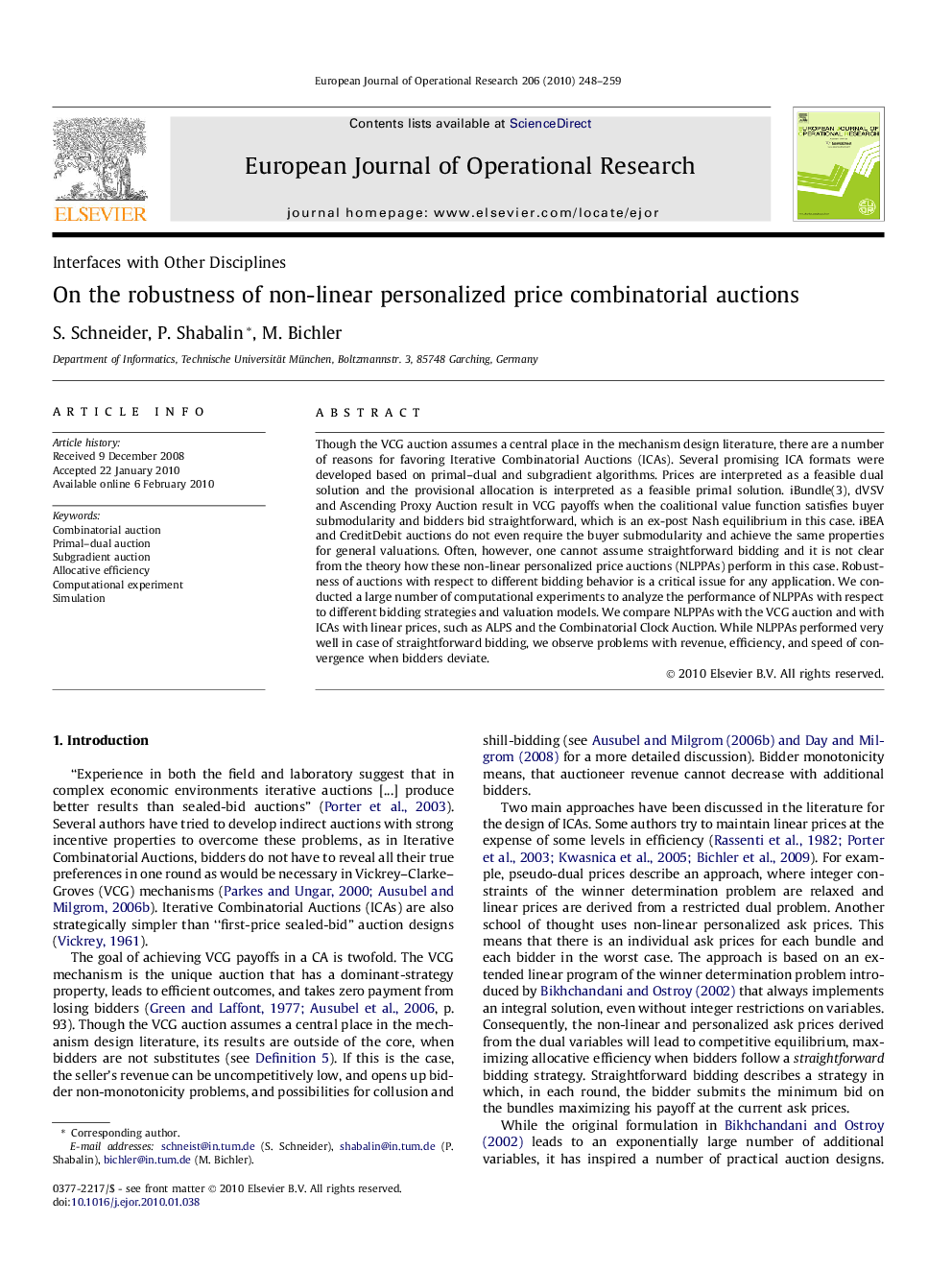| Article ID | Journal | Published Year | Pages | File Type |
|---|---|---|---|---|
| 481785 | European Journal of Operational Research | 2010 | 12 Pages |
Though the VCG auction assumes a central place in the mechanism design literature, there are a number of reasons for favoring Iterative Combinatorial Auctions (ICAs). Several promising ICA formats were developed based on primal–dual and subgradient algorithms. Prices are interpreted as a feasible dual solution and the provisional allocation is interpreted as a feasible primal solution. iBundle(3), dVSV and Ascending Proxy Auction result in VCG payoffs when the coalitional value function satisfies buyer submodularity and bidders bid straightforward, which is an ex-post Nash equilibrium in this case. iBEA and CreditDebit auctions do not even require the buyer submodularity and achieve the same properties for general valuations. Often, however, one cannot assume straightforward bidding and it is not clear from the theory how these non-linear personalized price auctions (NLPPAs) perform in this case. Robustness of auctions with respect to different bidding behavior is a critical issue for any application. We conducted a large number of computational experiments to analyze the performance of NLPPAs with respect to different bidding strategies and valuation models. We compare NLPPAs with the VCG auction and with ICAs with linear prices, such as ALPS and the Combinatorial Clock Auction. While NLPPAs performed very well in case of straightforward bidding, we observe problems with revenue, efficiency, and speed of convergence when bidders deviate.
